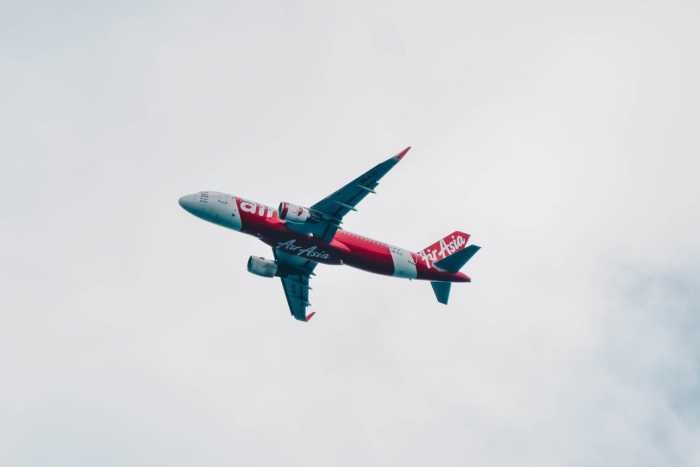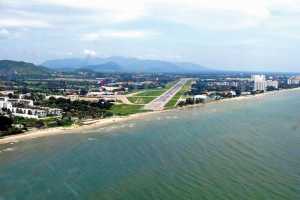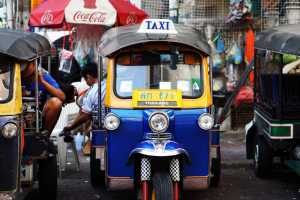
Airline Services in Asia
2nd Sep 2010

Air transport is the life blood of tourist destinations in Asia, particularly island resorts like Bali, Phuket, Koh Samui, Hainan in Southern China, Singapore, Hokkaido in Japan, Lombok, Indonesia and Palawan in the Philippines.
All such destinations have tourist-based economies that rely most heavily on airlines to bring in the visitors; and airports to efficiently process their arrival and departure. So the destination's aviation infrastructures must therefore be geared for large numbers of arriving passengers looking for a good time.
For this to happen, however, it requires a partnership between the airlines serving tourist destinations, and the airports they land at to take as much of the stress of travel as possible out of the experience.
If these essential ingredients are embedded in both sectors of the aviation industry, then the passenger's holiday (or business) experience will be strongly enhanced.
The question is: what mix of airline services and customer friendly experiences achieves the best results?
To put the competitive experience into perspective, there are around 40 headline airlines, full service and budget, servicing the Asian region, plus many more in sub categories and cargo.
Asia also has hundreds of airports. For example, Indonesia has 61 airports and Thailand 52, a mixture of paved runways and unpaved, military and civil aviation, big and small. Therefore, with this multitude and variety in airports and airlines some strict guidelines and standards must be applied to enhance the travelling experience.
Asia has more devastating public health pandemics than other regions (H1N1, bird flu and SARs viruses) that directly affect the airline industry. So the World Health Organisation imposes stricter conditions of entry at airports and emergency health protocols.
Or take baggage, something all travelers worry about. Are airports and airlines efficient at handling bags and, at the end of the day, can you collect your bag quickly, if at all? The International Air Transport Association (IATA) has introduced the Baggage Improvement Program (BIP) to provide airlines, airports and ground handlers with tools to integrate systems.
Other major issues airlines and airports must take into consideration are security, passenger processing systems (check-in) biometrics (verification of passports, visas etc.), information desks, body searching at security and up market, high quality brand shopping facilities, which are now an essential, if often expensive, part of the travelling experience for most people.
Biometrics are crucial. New biometric methods of recognition that can accelerate progress through an airport being introduced include facial, speaker, fingerprint and iris recognition, and a retinal eye scan. The biometric passport, or e-passport, is now widely used by many countries.
Taking a sample of these issues and looking to the future, the travelling experience can only get better.
Security, for example. For most people enduring X-ray scanners, taking off belts and shoes and jackets and removing objects such as cell phones and computers at airport security is something that is grudgingly accepted as necessary. But there is no reason why it should not be both a less stressful and faster experience.
Taking a slightly more extreme, but also probably realistic, example: human brain fingerprinting as a way of detecting criminal 'intent,' or the behavioral intent of the passenger, is currently being tested in Israel.
The downside is that this could cause considerable stress for passengers, e.g. parents travelling with children or adults who are nervous flyers, of which there are millions. Another security idea is the step-on X-ray which scans shoes in two seconds as the customer walks through the machine.
Strip searching passengers using full-service body scanners is currently being tested at a number of airports, such as Melbourne in Australia. The machine is designed to find people hiding weapons. It shows an outline of the person's body, but in an opaque, blurred manner so no genitals are exposed.
This remains a technology of some controversy as it is not yet foolproof, with obvious privacy implications. But it is the way of the future.
Other innovations either being tested or already in use are cell-phone check-in, check-in before arriving at the airport, in-cabin mood lighting to help adjust to time zones, better reclining economy class seats that reduce 'squashing' down the back of the bus, driverless 'pods' zipping people between an airport and parking lot, standard power sockets on the plane (no adapter necessary) informing passengers of upgrade opportunities when using a check-in kiosk and, for pilots, and GP-based air traffic control systems that make radar outmoded and redundant. iPads are set to replace traditional in flight entertainment in the not too distant future.
Airport shopping is also changing. London Heathrow's new Terminal 5 has linked to high-end department store Harrods of London to give the shopping an up-market feel.
These are some examples of the advances being made in airline and airport technologies to make the passenger journey more comfortable.
It is a work in progress, but it will not be too long before airports around Asia, for example, will be installing full service body scanners and using sophisticated biometrics while airlines will have soft mood lighting and new style economy seats.









